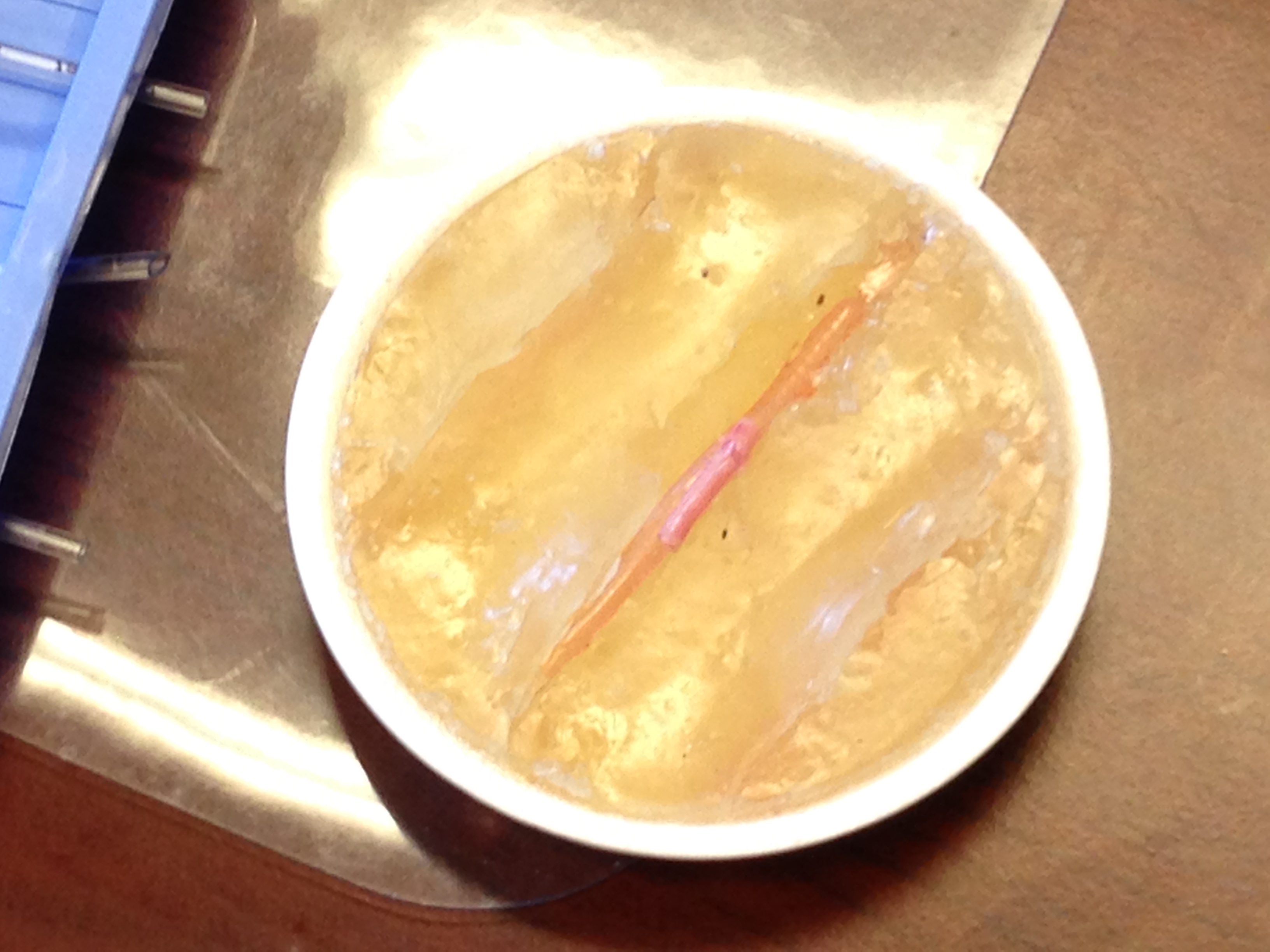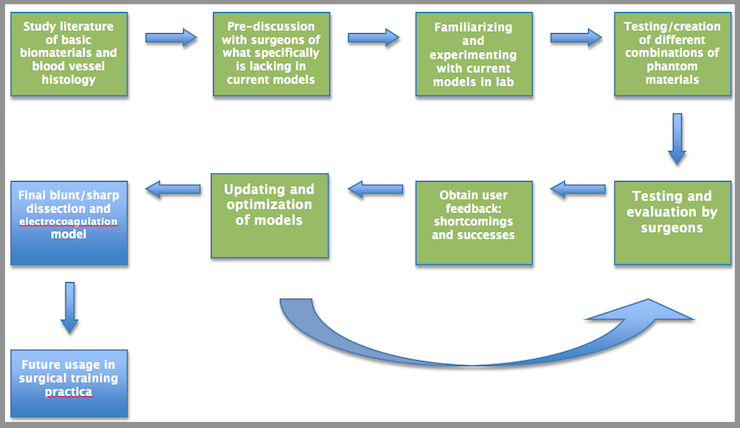Contact Us
CiiS Lab
Johns Hopkins University
112 Hackerman Hall
3400 N. Charles Street
Baltimore, MD 21218
Directions
Lab Director
Russell Taylor
127 Hackerman Hall
rht@jhu.edu
Last updated: 5/9/14 9:44pm
This project surrounds the topic of implementing a blood vessel and tissue dissection simulation as well as a model for robotic surgery training. Further sub-topic will include the study of blood vessel histology as well as exploring and experimenting with synthetic biomaterial replication of human tissue and vasculature. Additionally, this project will incorporate and require a development of a basic understanding of energy-cutting electrosurgery and electrocoagulation. The goal of this project is to create an inanimate surgical training model for both sharp and blunt tissue dissection as well as blood vessel energy-cutting that is ultimately cheap, effective, potentially reusable, and long-lasting. User feedback from currently practicing surgeons through the Minimally Invasive Surgical Training and Innovation Center (MISTIC) will be incorporated to further develop a comprehensive dissection and energy-cutting model for future robotic surgery training.



A significant amount of time will be spent collaborating with robotic surgery educators in the MISTIC program at the JHMI. We hope to begin by gauging interest and understanding the process of developing a more realistic physical blood vessel dissection model. We then will proceed to evaluate shortcomings of current models and use them as a basis from where we can develop a more successful model. The next step will be to search for different potential material and media to use for the phantom tissue creation, including gelatin, plastisol, silicone gel, latex, and even cotton stuffing. Additionally, we will evaluate each medium based on its cost, its effectiveness in replicating human tissue, and its potential to be reusable and to be long lasting. At the same time, we will proceed to search for tubing material that is conductive enough so that it will behave similar to a vessel in an energy-cutting model in terms of coagulation and dissection. From there, we will create a blunt/sharp dissection model that focuses on maintaining realistic surrounding tissue and an energy-cutting model that focuses on realistic blood vessel coagulation. We then will proceed to test and observe how our model behaves by allowing practicing surgeons to use them. Afterwards, we will document the results and evaluate user feedback in order to modify the prototypes. Currently, we have developed a prototype for the blunt/sharp dissection model and are undergoing feedback and evaluation through surgeons at MISTIC. We aim to get the electrosurgery model under evaluation soon as well.
- Access to mentors
- Access to lab space to create phantom media
- Cost to afford material
- Access to relevant literature
- Access to surgeons who are willing to practice on and evaluate the effectiveness of the model prototypes
Here give list of other project files (e.g., source code) associated with the project. If these are online give a link to an appropriate external repository or to uploaded media files under this name space.